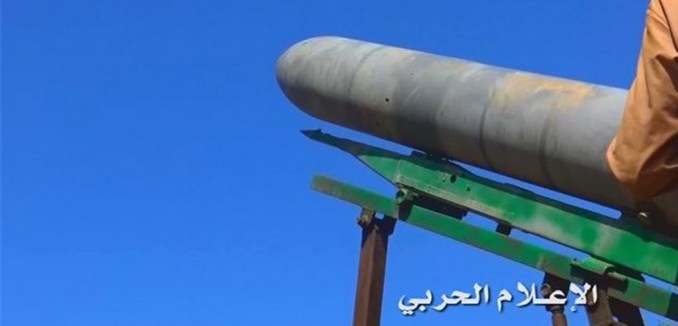Iran-backed Houthi rebels launched a short-range ballistic missile against Saudi-led forces backing the internationally-recognized government of Yemen, Seth Frantzman reported Monday in The Jerusalem Post.
Citing reports in the Iranian media, Frantzman wrote that the missile, called the Badr P-1, had been unveiled last month by Houthi forces boasting that it was a “domestically designed and manufactured smart missile intended to precisely hit specific targets.” The missile was said to possess “increased lethality” and was designed to counter the Saudi-led coalition fighting in Yemen.
“The missile hit the target with high precision and led to the deaths and injuries of a number of military allied forces with the Saudi coalition,” Iran’s Fars News reported Monday. The report also claimed that the missile was part of a larger development program that possibly included “other missiles.”
Frantzman noted that the Badr P-1 resembles the Iranian Fajr-5 artillery rocket. He observed further that “Iran has an extensive missile program and has been increasing the precision of its ballistic missiles in the past year.” Iran had fired ballistic missiles in attacks on ISIS in October, and Kurdistan in September.
Late last year, United States Ambassador to the United Nations Nikki Haley displayed parts of missiles that had been fired by the Houthis into Saudi Arabia. Haley said that the remnants of one of the missiles bore “Iranian missile fingerprints.” Haley also referred to a UN report that detailed Iran’s compliance “or noncompliance” with UN Security Council Resolution 2231. That is the resolution that implemented the nuclear deal, but also prohibited Iran from “weapons transfers and ballistic missile activity.”
The UN report found that Iran had violated UN Security Council Resolution 2216, which implemented an arms embargo of the Houthi rebels. The report found that Iran had allowed the “sale or transfer, of Borkan-2H short-range ballistic missiles, filed storage tanks for liquid bi-propellant oxidizer for missiles and Ababil-T (Qasef-1) unmanned aerial vehicles” to the Houthis, in violation of the embargo.
Frantzman assessed that the Houthi publicization of their latest missile showed that “they are trying to illustrate their abilities.” The fact that the videos were transmitted to Iranian outlets “shows a clear notion of where the support comes from,” he added.
Though the Houthis highlight the poverty and starvation in Yemen, Frantzman observed that they have nonetheless “developed precision munitions.” He concluded that the Houthi missile program “has links to the wider Iranian attempt to support missile programs among Hezbollah and Hamas, either through financial support or direct technology transfers.”
[Photo: Tasnim News ]




